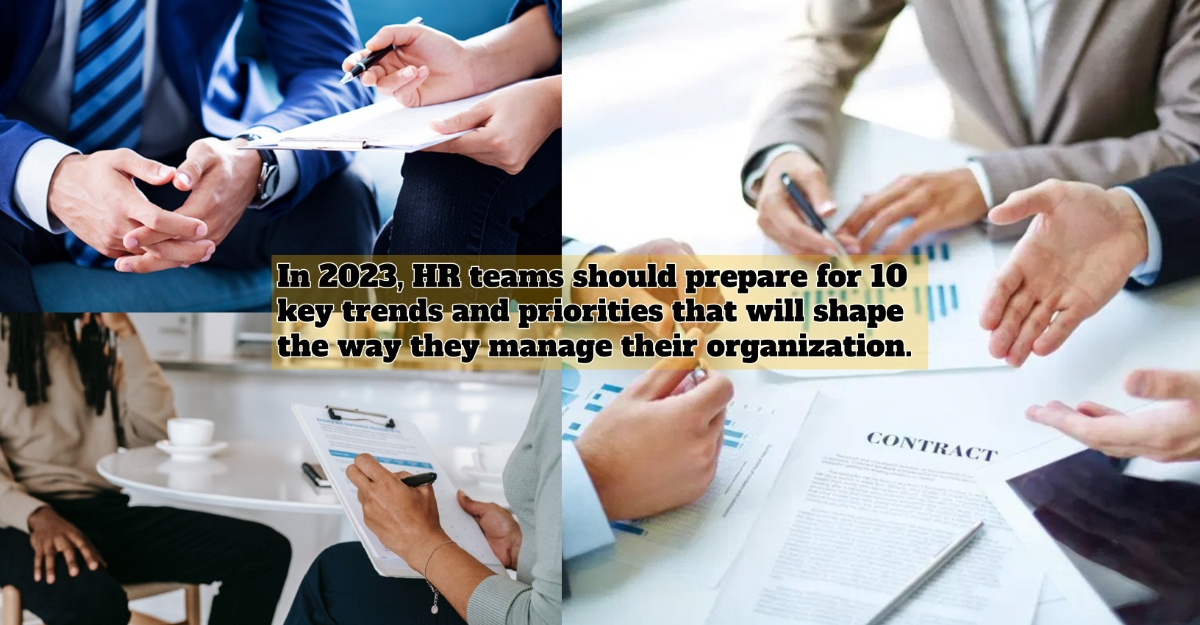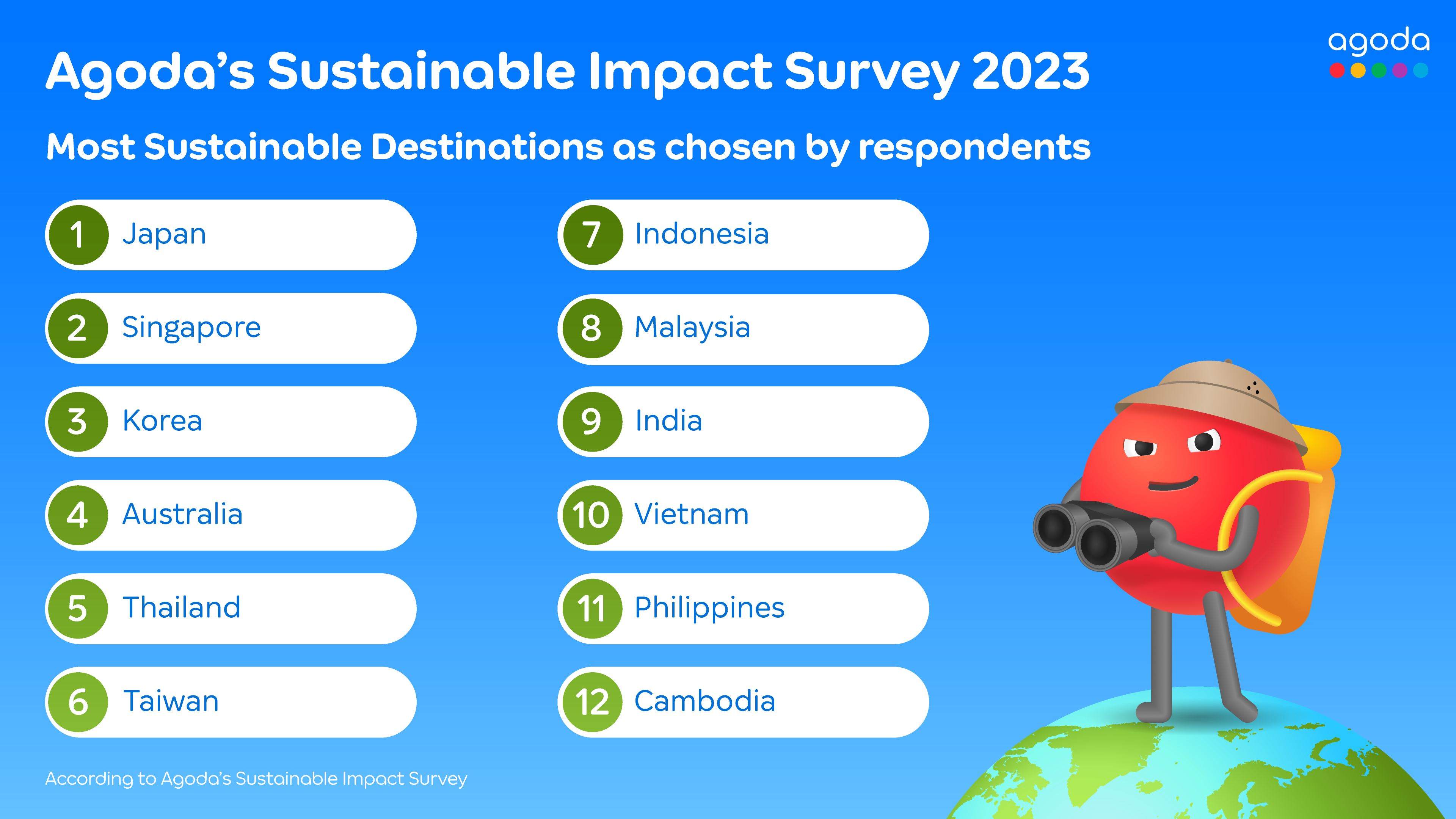The Human Resources (HR) landscape is ever-changing and adapting to the needs of a business. As the world continues to evolve and develop, HR teams must stay ahead of the curve and anticipate the changes that will shape the future of HR. In 2023, Human Resources teams should prepare for 10 key trends and priorities that will shape the way they manage their organization. These trends will focus on how to optimize HR processes and deliver a better employee experience. From understanding the employee journey to using HR tech solutions, HR teams will need to focus on the following 10 HR trends and priorities to remain competitive and successful in the Human Resources arena.

- Understanding the Employee Journey
As the global economy continues to change, so will the employee journey. Understanding the employee journey can help HR teams to ensure that employees are engaged and satisfied with their experience working with their organization. HR teams will need to understand where their employees are in the hiring process and what they need to feel engaged and satisfied while they work with the company. With the employee journey in mind, Human Resources teams will be able to create more personalized interactions and tailor their offerings to the needs of their employees. They will also be able to better manage and reduce the time it takes for employees to get onboarded, and they will be able to reduce employee turnover by providing a personalized employee experience.
- Enhancing the Employee Experience
HR teams will need to continue to enhance the employee experience to ensure that employees are happy, content, and engaged in their work. In 2023, companies will need to offer more personalized benefits and perks to stay competitive and keep talented employees such as personalized work hours, and on-site therapy, among others. By enhancing the employee experience, HR teams will be able to retain their best talent, which will help an organization achieve its business goals.
- Leveraging HR Technology Solutions
With the increased demand for tailored benefits and a positive employee experience, HR teams will need to leverage technology and HR technology solutions to make this happen. From employee engagement and satisfaction surveys to recruitment software and tools, Human Resources teams should be focused on leveraging technology and HR technology solutions to support their business. By leveraging these solutions, HR teams will be able to automate many of the tedious and time-consuming processes they complete while managing employees and also providing an individualized experience to employees.
- Emphasizing the Role of Analytics in HR
Employers will need to collect data to understand which of their employees need certain benefits and what they need. Analytics can help to drive this process and provide the insights needed to make these decisions. The biggest advantage of analytics in HR is that it is essentially an automated approach to collecting data in a very efficient manner. It also provides added value to businesses by providing insights into how the business is performing so that it can make the necessary improvements to stay competitive.
- Focusing on Diversity, Equity, and Inclusion
As the world continues to change, so will the role of diversity, equity, and inclusion in the workplace. HR teams should continue to focus on driving a culture of diversity, equity, and inclusion to ensure that their employees are happy and feel supported in their work. To do this, HR teams should make a shift from hiring for skills to hiring for cultural fit. Hiring for cultural fit will allow an organization to hire a more diverse set of employees. It will also help to eliminate unconscious bias within the hiring process and ensure that all employees feel supported and valued within the organization.
- Implementing Continuous Performance Management
As the employee experience continues to improve, the need for continuous performance management will increase. Continuous performance management is the process of monitoring an employee’s performance at all times instead of completing annual reviews. This allows employers to intervene earlier if they notice an employee is not meeting the company’s standards. With the push towards more automation and the use of technology in HR, continuous performance management is bound to become a common practice among businesses. Continuous performance management will allow employers to provide a better employee experience and a more personalized approach to managing their employees.
- Prioritising Wellbeing and Mental Health
With the rise of mental health issues, such as anxiety and depression, HR teams should focus on well-being in their organizations. Employers should be offering mental health benefits and tools, such as meditation programs and therapy initiatives, to their employees to help them manage their mental health. By prioritizing the well-being and mental health in the workplace, employers will be able to retain their employees and keep them healthy and productive. This will also help employers to create a more positive and healthy organizational culture.
- Investing in Employee Development and Learning
As the employee experience evolves, the need for employee development and learning will increase. Employers will need to invest in employee development and learning to ensure that their employees remain competitive and valuable in their careers. This can be done through online courses, mentorship programs, or providing tuition reimbursement, as examples. By investing in employee development and learning, organizations can drive up employee retention and ensure that their employees are successful and fulfilled in their work.
- Optimizing Recruitment Strategies
As the economy and job market continue to evolve, the recruitment strategies of organizations will need to change. With the rise of automation, the use of technology in the hiring process, and the increased demand for customized benefits, recruitment strategies will need to change. Instead of relying on traditional hiring methods, such as job boards and résumé submissions, employers will need to take a more customized approach to hiring. In 2023, employers will focus on building strong employer brands and providing personalized career advice and guidance to job seekers.
- Embracing Automation and Robotics
While the adoption of automation and robotics will impact job roles, it will also create new roles and opportunities for employees. To prepare for this shift, HR teams can start by investing in expertise. This can include hiring employees who have expertise in automation and robotics, or it can include hiring talent that has the skills and expertise to manage and oversee robotic implementations. In addition, HR teams should prepare for automation and robotics by figuring out which processes can be automated, what skill sets will be needed to manage and oversee automation, and how to manage change in the organization and culture as a result of automation and robotics adoption.
Bringing it all together
As the world continues to change and develop, so will the HR landscape. HR teams will need to anticipate the changes that will shape the future of HR by focusing on the 10 HR trends and priorities to prepare for success and manage their organization better. This begins with understanding the employee journey, enhancing the employee experience, leveraging HR technology solutions, and emphasizing the role of analytics in HR. Next, organizations should focus on diversity, equity, and inclusion and implement continuous performance management. Finally, organizations should invest in employee development and learning, optimize recruitment strategies, and embrace automation and robotics to prepare for the future of HR.
Onward to 2023!








